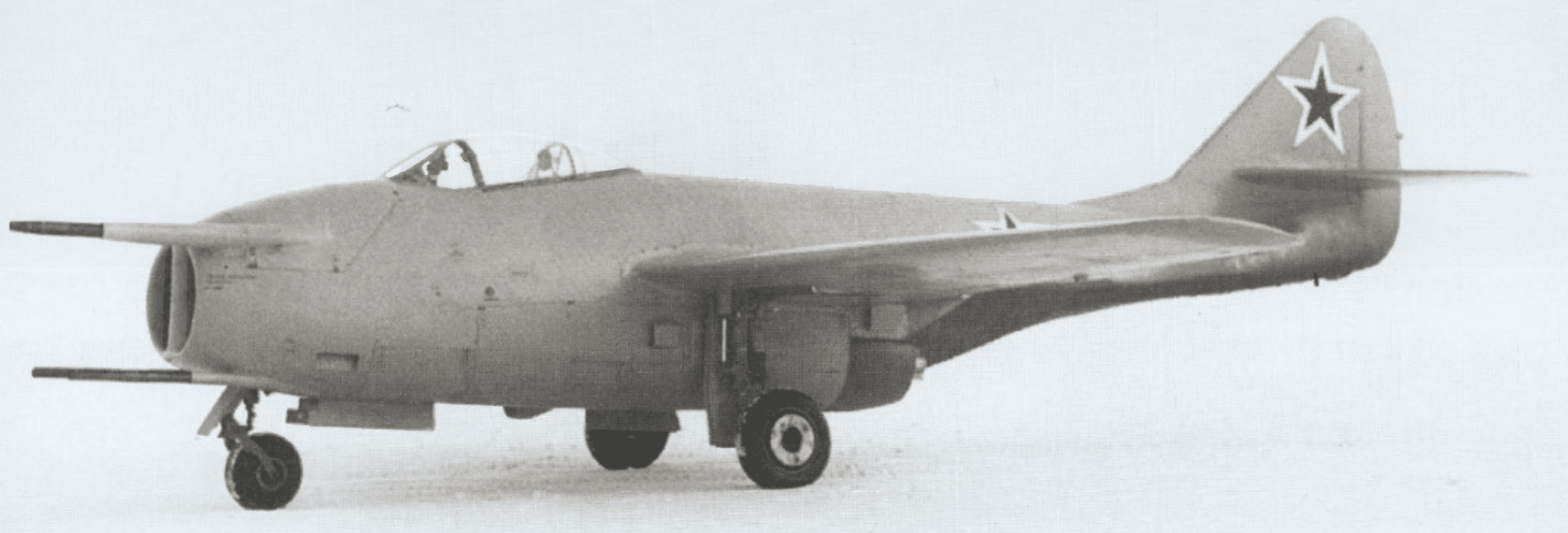
Image via Wikimedia Commons, licensed under CC BY-SA 3.0: https://commons.wikimedia.org/wiki/File:Mikoyan-Gurevich_MiG-9_Oct1946.png
Let’s dive into a journey from invention of the first Russian Fighter Jet MiG-9 to Su-57. Throughout its modern history, the Russian nation has always been in conflict with the great European nations, relying on the Asian steppes. In order to compete with its European and transatlantic rivals, it entered into a technological and industrial competition.
In modern times, the most important competition between war and industry is experienced in air space. The way to dominate the airspace is undoubtedly through having fighter jets that can bite the enemy.
The history of Russian warplanes is a testament to the nation’s relentless pursuit of technological advancement and air dominance. From the first post-World War II jet designs to today’s cutting-edge stealth aircraft, each model tells a unique story of innovation, strategy and warfare evolution.
Each day during this series, we will take a closer look at a different aircraft from Russian aviation, analyzing its design, technical specifications, operational history, and role in global military aviation.
We begin our expedition with the MiG-9, the Soviet Union’s first jet-powered fighter jet.
MiG-9: The Soviet Union’s First Jet Fighter and Its Unfortunate Flaw
World War II had shown the world that air superiority could drastically change the course of a war. Jet engines, which began to be used towards the end of the war, were the footsteps of a great revolution. By the late 1940s, it was clear that nothing in military aviation would ever be the same again.
The Soviet Union, emerging as a superpower, could not afford to fall behind the West in the jet engine race. In February 1945, the Council of People’s Commissars ordered the Mikoyan-Gurevich (MiG) OKB to develop a single-seat jet fighter equipped with two German BMW 003 engines. The MiG-9 was born; an aircraft that was both revolutionary and flawed in equal measure.
The Race to Jet Power
At the end of the Great War, Soviet engineers seized the superior German jet technology. The Mikoyan-Gurevich Design Bureau, led by Artem Mikoyan and Mikhail Gurevich, was tasked with turning this knowledge into a working fighter. The I-300 prototype they created made its first flight on April 24, 1946. The Soviets had officially entered the jet age.
The aircraft had a pod-and-boom layout similar to German and British designs. A sleek fuselage housed two RD-20 turbojet engines, essentially reverse-engineered versions of the BMW 003. With a top speed of 910 km/h (566 mph) and a service ceiling of 13,500 meters (44,280 feet), the first Soviet jet fighter appeared to live up to expectations.
This aircraft is built for a single crew member and has a sleek design that’s both efficient and functional. It’s just under 10 meters long and stands a little over 3 meters high, with wings that stretch about 10 meters across, giving it the stability needed for smooth flight.
It weighs a little over 3,400 kg when empty, but can handle a bit more weight when fully loaded, thanks to its solid build. The two turbojet engines give it some serious power, allowing it to reach impressive speeds and cover long distances.
Equipped with a few powerful cannons, this aircraft is ready to take on a variety of tasks. It’s clear that this is a machine designed for performance, with the strength and agility to handle what’s thrown at it.
MiG-9: A Fighter That Couldn’t Fire
Despite its promising features, the MiG-9 had a major problem; a problem that could turn an air battle into a death sentence.
When the aircraft’s cannon was fired at high altitudes, the engines would catch fire. When the aircraft’s cannon was fired, it would inhale gases from the air, depriving the engines of oxygen and causing them to shut down in the air.
Not only would the engines shut down, they would turn into a ball of flame and start burning. Imagine that you are a Soviet pilot who has completed your rigorous training and whose adrenaline is rising in his first air combat. Your capitalist enemy is visible at the end of the barrel, but at that moment you realize that pulling the trigger means crashing into the ground. Horrifying…
Various adjustments were made to eliminate this horrific flaw, but the desired efficiency was never achieved.
Operational History and Legacy
Between 1946 and 1948, 602 MiG-9s were built.
The plane, full of design flaws, could not survive a serious war, but it was a great experience for Soviet aviation. Despite all its flaws, it was one of the first steps towards the production of warplanes that rained death. The MiG-9 may not have been a legend in its own right, but without it, there would be no MiG-15, no MiG-29, and no Su-57.
You can remember this old man, who reminds us of the times when jet technology was in its infancy, by visiting aviation museums.
In the next part, we’ll take a look at its immediate successor—the aircraft that truly put Soviet aviation on the world stage. Stay tuned.





